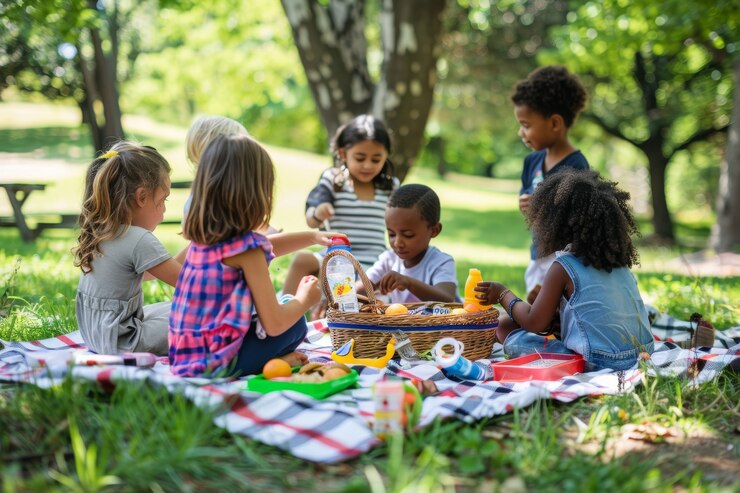Scavenger Hunt Fun: Organising an Outdoor Adventure in Your Garden
Creating a memorable scavenger hunt in your garden is a fantastic way to engage guests, especially children, in an outdoor adventure. This guide will provide you with the tips and tricks needed to organise a thrilling scavenger hunt, transforming your garden into an exciting arena for discovery and fun.

Planning Your Scavenger Hunt
Setting the Scene
The first step in planning a scavenger hunt is to prepare your garden. Ensure the area is safe and accessible for all participants. Mow the lawn, clear any debris, and make sure pathways are unobstructed. Consider the layout of your garden and identify areas that can serve as good hiding spots for clues and treasures.
Choosing a Theme
A theme can add an extra layer of excitement to your scavenger hunt. Whether it’s a pirate treasure hunt, a magical fairy quest, or a nature exploration, a theme helps to unify the event and make it more engaging. Decorate your garden according to the theme and create themed clues and challenges.
Designing the Hunt
Crafting Clues and Challenges
The heart of a scavenger hunt lies in its clues and challenges. Create a series of clues that lead participants from one location to the next. Each clue should be tailored to the age and abilities of the participants. For younger children, use simple riddles and visual clues. For older children or adults, incorporate puzzles, codes and more complex challenges.
Incorporating Learning Elements
In addition to being fun, scavenger hunts can be educational. Include tasks that require participants to learn something new, such as identifying plants, insects, or birds in your garden. This not only adds value to the activity but also enhances participants' appreciation for nature. Are your children learning something particular at school? Incorporate questions about their current studies and make it a great addition to their school work. Help them to see what they’re studying in a fun light.
Using Technology
For a modern twist, consider incorporating technology into your scavenger hunt. Use QR codes that participants can scan with their smartphones to receive clues. There are also various scavenger hunt apps available that can help you design and manage the event.
Setting Up the Hunt
Hiding the Clues
When hiding clues, make sure they are well-concealed but not impossible to find. Use weatherproof materials to protect clues from the elements. Place clues in locations that are safe and easy to access, avoiding any areas that could be hazardous.
Creating a Base Camp
Establish a base camp where participants can gather before the hunt begins. A party gazebo tent is perfect for this purpose, providing shade and a central meeting point. Decorate the tent according to your theme and stock it with supplies such as maps, clipboards, and pens. And don’t forget the snacks!
Organising Teams
If you have a large group, consider dividing participants into teams. This can add a competitive element to the hunt and encourage teamwork. Provide each team with a different starting point to prevent bottlenecks and ensure a smooth flow.
Executing the Hunt
Starting the Adventure
Kick off the scavenger hunt with a brief introduction, explaining the rules and objectives. Hand out the first clue to each participant or team and set them off on their adventure. Make sure to have a few helpers on hand to assist participants and ensure everyone is following the rules.
Monitoring Progress
Keep track of participants’ progress throughout the hunt. This can be done by setting up checkpoints where they must check in or by using a mobile app that allows you to monitor their locations. This ensures that everyone stays on course and helps you manage the timing of the event.
Concluding the Hunt
End the scavenger hunt with a final challenge or a hidden treasure. The first team or participant to complete the hunt wins a prize. Gather everyone at the base camp to celebrate and hand out awards. Consider giving small prizes or certificates to all participants to acknowledge their efforts.
Enhancing the Experience
 Adding Extra Activities
Adding Extra Activities
To extend the fun, consider adding extra activities after the scavenger hunt. Set up games, crafts, or a BBQ in your garden. This allows participants to unwind and enjoy the outdoor setting even more.
Outdoor games without equipment will be a saviour during school holidays when the sun is shining, the perfect way to provide entertainment for the little ones!
Creating Lasting Memories
Capture the moments by taking photos or videos throughout the event. Share these with participants afterwards, creating a keepsake of the fun day or a simple shared photo album on your phones. You can also create a photo booth with themed props for participants to take pictures as a memento.
Organising A Scavenger Hunt Fun Has Never Been So Easy
Organising a scavenger hunt in your garden is a fantastic way to bring people together for a day of adventure and fun. With thoughtful planning and creativity, you can create an event that is both entertaining and memorable. Don't forget to incorporate a party gazebo tent to serve as a central hub for your event, adding to the excitement and ensuring a well-organised experience.
So gather your supplies, craft your clues, and get ready to embark on a thrilling outdoor adventure in your very own garden. Your guests are sure to enjoy every moment of the scavenger hunt, creating cherished memories that will last a lifetime